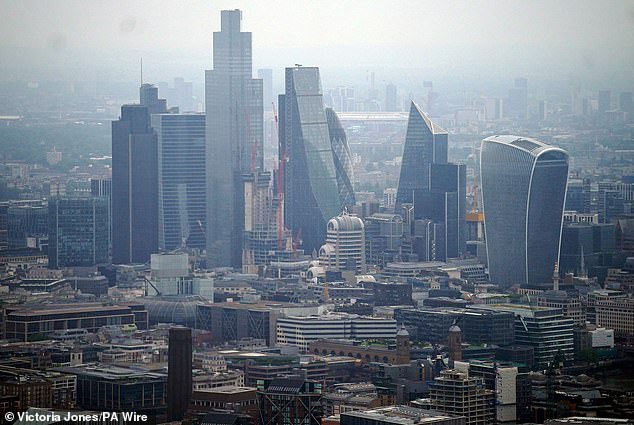The world’s largest publicly traded companies spent a record amount on debt interest payments last year, data suggests.
Analysis by asset manager Janus Henderson found that companies paid $458 billion in interest to banks and bondholders in 2023/24, $89 billion more than the previous year.
In its latest report on the Global Corporate Debt Index, the London-based group said rising interest bills were due to the effect of “higher for longer” borrowing rates.
Rising costs: Asset manager Janus Henderson revealed that companies paid $458 billion in interest to banks and bondholders in 2023/24, $89 billion more than the previous year.
Central banks, including the Bank of England, the European Central Bank and the US Federal Reserve, raised rates on multiple successive occasions throughout 2022 and 2023 before holding them steady as inflation began to moderate.
UK companies saw interest costs rise 29.6 percent and their net debts increase just 3.2 percent at constant exchange rates to $484 billion.
Mining giants Glencore and Anglo American were the biggest contributors to the debt growth, having borrowed heavily to finance dividends and share buybacks as their cash flow was hit by falling commodity prices.
Tim Winstone, portfolio manager at Janus Henderson, said: “Companies in highly cyclical sectors such as mining enjoy unreasonably tight spreads given the higher risk to their earnings.”
Shareholder returns also caused net debt to rise at equipment rental company Ashtead Group, reaching $10.7 billion at the end of April, compared with around $9 billion at the same time last year.
By comparison, the UK’s most indebted company, Vodafone, reduced its net debts by selling numerous assets, including its Hungarian and Ghanaian divisions and a stake in phone mast group Vantage Towers.

Digging: Mining giants Glencore and Anglo American were the biggest contributors to the growth in UK corporate debt as they borrowed heavily to fund dividends and share buybacks.
Overall global corporate borrowing grew by $378 billion to $8.2 trillion in 2023/24, a slower pace than the previous year, which Janus Henderson attributed to higher interest rates.
The investment group estimated that acquisitions drove much of this increase, with large deals in the health sector accounting for a third of total growth.
Recent industry deals include Amgen’s $27.8 billion purchase of Horizon Therapeutics and Roche’s $7.1 billion acquisition of immunology company Telavant.
Another third of the growth in corporate debt came from vehicle manufacturers, whose working capital needs have increased in tandem with their sales.
German giant Volkswagen has become the world’s most indebted company for the first time since 2020, increasing its net debts by $32 billion to $196 billion as it borrowed huge sums to cover its auto financing operation.
Toyota was next, with net debts of $179 billion, while Ford, Mercedes-Benz and Chevrolet maker General Motors were also among the top ten borrowers.
At the same time, Google owner Alphabet has maintained its position as the world’s most cash-rich company for the eighth year in a row, even after spending $170 billion on share buybacks over the past three years.
All sectors except non-oil energy and all countries in the Janus Henderson index saw their debt servicing costs reach record levels.
Regionally, Japanese companies had the fastest expansion in interest bills for the second year in a row, with a year-on-year increase of 39 percent.
This came after the Bank of Japan raised interest rates in March for the first time since 2007, from negative territory to between zero and 0.1 percent, although Janus Henderson noted that debt levels are “relatively small.” in Japan.
European companies also saw interest rates continue to rise, rising 28 percent, while the comparative jump for US companies was 23 percent.
Winstone believes businesses are mostly “absorbing these costs with little difficulty” but warned that interest bills will likely continue to grow “for the time being” as old debts begin to mature and be refinanced at higher rates.
This comes despite analysts expecting widespread interest rate cuts, including in the UK and US, as inflation returns to more normalized levels.
Some links in this article may be affiliate links. If you click on them we may earn a small commission. That helps us fund This Is Money and keep it free to use. We don’t write articles to promote products. We don’t allow any commercial relationships to affect our editorial independence.


